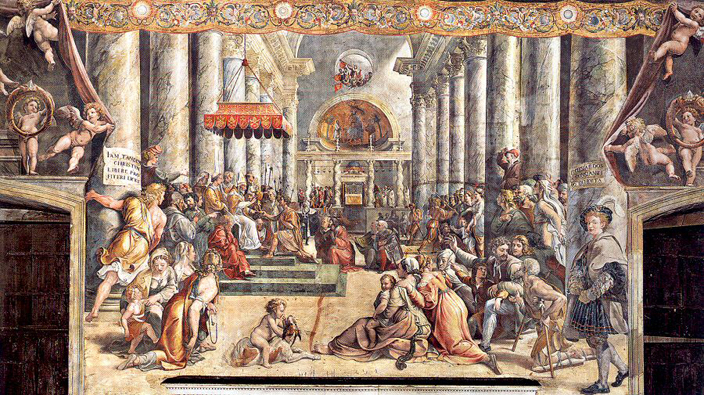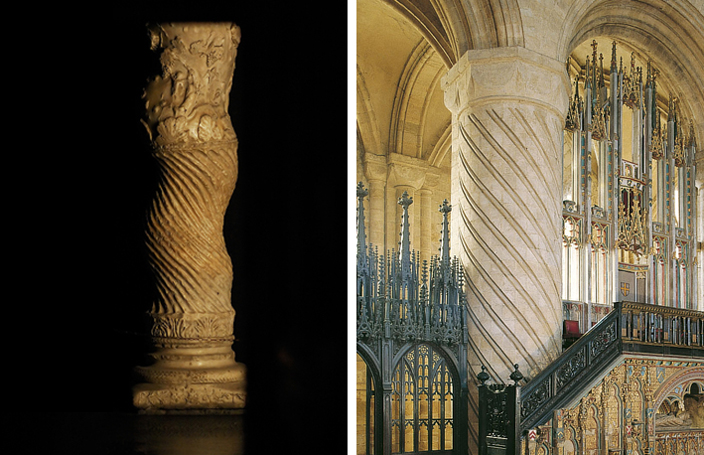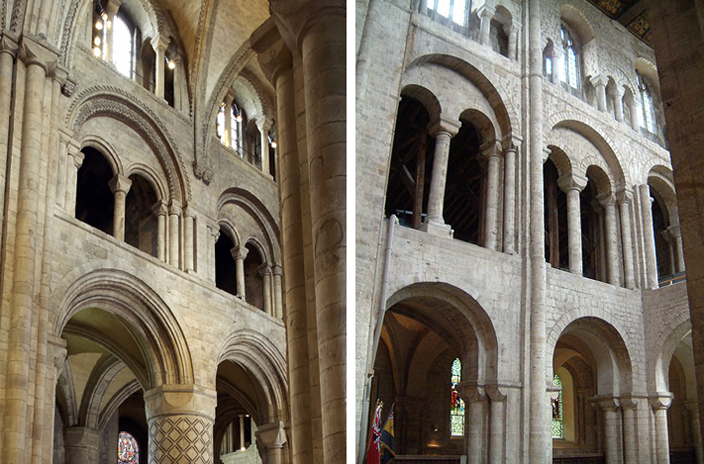Much of our knowledge about the building of Durham Cathedral comes from the account of Symeon, a Durham monk who witnessed its construction, and wrote what he called "The Little Book on the Origins and Progress of this Church, of Durham".
Symeon tells us that Bishop William of Saint Calais ordered the construction of a new cathedral to replace the one built 98 years earlier (by the Anglo-Saxon Bishop, Aldhun), “on a nobler and grander scale”. The digging of the foundations of St Calais’ Cathedral began after prayers on 29th July 1093, while the first stones were laid on August 11th of the same year.
A Monastic Cathedral
Durham Cathedral was built as a monastic cathedral, for a community of monks that followed the Benedictine Order.
Symeon also mentions that while the monastic buildings were paid for by the monks, the cathedral itself was funded by the Bishop, who must have also had a personal role in the design of the building.
The Cathedral as an Architectural Statement
There is little doubt that William of St Calais wanted his cathedral to outshine its English contemporaries, and to ensure that it would have a place as one of the great cathedrals of the Christian World.

Sixteenth-century painting of St Peter's Basilica, before its reconstruction. Old St Peter's, as it is now called, was constructed by the emperor Constantine in the 4th century AD. Around the shrine of St Peter were four antique spiral columns, allegedly brought from the temple of Solomon, and therefore an important element of the building. This Basilica inspired the original construction of Durham Cathedral as well as additions by later Durham Bishops.
St Peter’s in Rome: A Source of Influence
One of the most important references for the construction of a cathedral in Norman times was the old St Peter’s in Rome. Accordingly, the original length of Durham Cathedral from the apse housing St Cuthbert’s shrine at the eastern end of the building to its former main entrance at the western end is just 70cm longer than St Peter’s was; its nave is almost exactly the same width, and its spiral columns a clear reference to those which were to be found on the canopy around St Peter’s Shrine.

Left: One of the 'Solomonic' Columns reused in Old St Peters Basilica, the Catholic mother church, and therefore a source of inspiration for religious buildings, especially shrines, throughout the Christian world. Right: One of the columns in the area before the shrine of St Cuthbert in Durham Cathedral, almost certainly inspired by the column to the left.
© Left: ronreznick.photoshelter.com; right: Durham Cathedral and Jarrold Printing
Norman Cathedrals and the Cult of Saints
In linking his building to the cathedral of St Peter, William of St Calais was following a tradition that had developed in slightly earlier cathedrals in Norman England, also comprising the shrines of saints. A comparison of Durham with Winchester Cathedral in particular (begun in 1079) shows many similarities, and it is plausible that both buildings were the work of the same master mason, who is thought to have been English (judging by the details of his work, which are more in the English tradition than in that of Normandy).

Interior views of the cathedral of Durham (left) and Winchester (right). Although Winchester is slightly simpler, the similarities between the two buildings are remarkable.
Were there other influences from further afield?
It is possible: the intersecting arches along the aisles in Durham Cathedral are thought to be inspired by the architecture of Islamic Spain. There are indeed striking similarities, and it is very possible that William of St Calais, in wanting to create a truly great building, would have readily incorporated architectural novelties that he had heard of or even seen.
Ranulf Flambard: The Cathedral's Second Patron
Unfortunately William of St Calais died in 1096, just three years after work on the Norman Cathedral began. He was succeeded by Ranulf Flambard, a man with grand ambitions, who was made Bishop of Durham in 1099. Flambard remained Bishop until his death in 1128, leaving behind an almost-completed cathedral. It was finished in 1133, just five years later.

